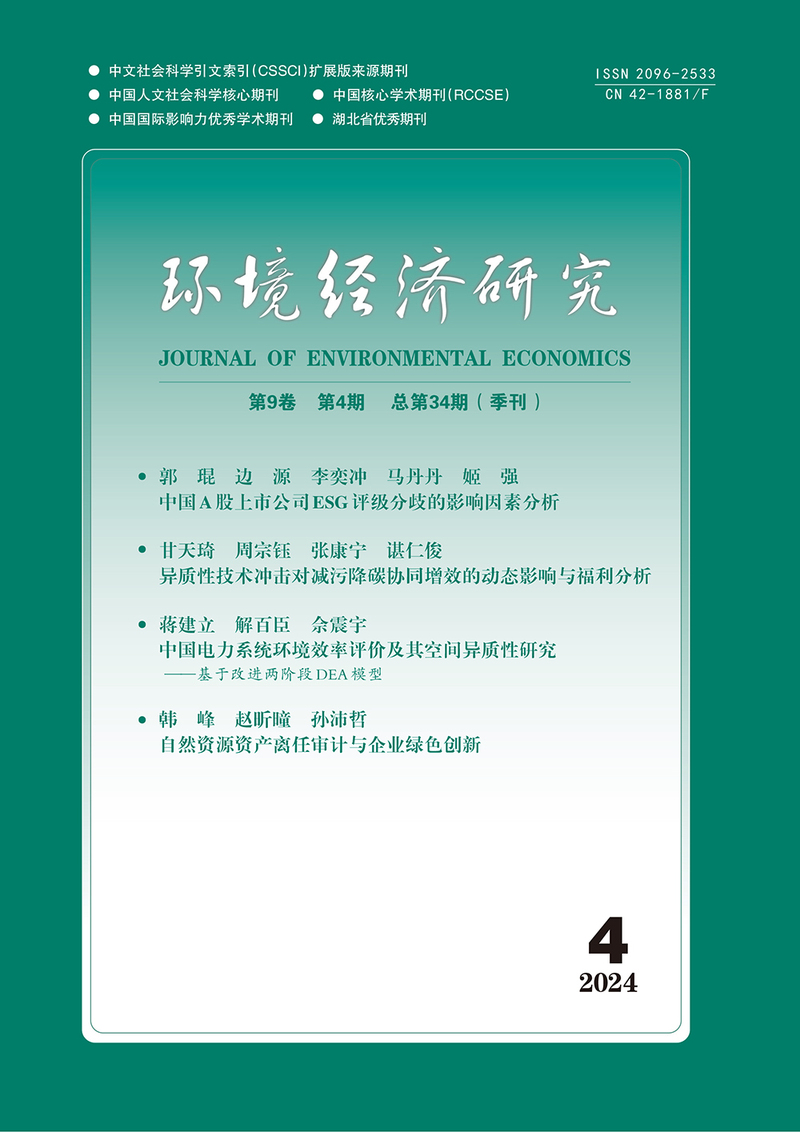Efficiency-based Optimal Quota of Carbon Emissions and
Abatement Cost in China by 2030
Li Jianglong and Han Rong
摘要:作为世界上最大的能源消费国和碳排放国,如何高效公平地将碳排放配额分解到各省份是实现国家节能降碳总体目标的关键问题之一。本文先基于预测数据评估各省份2030年碳排放效率,再运用零和收益数据包络分析模型对各省份能源消费和二氧化碳排放进行重新分配,使各省份达到有效前沿(即效率视角下的最优配额),尤其考虑了产业异质性。然后基于效率视角下的最优配额测算了各省份二氧化碳边际减排成本,探讨配额机制的经济效益。结果表明,东南沿海和北京等效率高的发达地区减排成本高,在效率优先的“局部最优”情景下,可以获得更多配额;相反,宁夏、新疆等效率低的欠发达地区,可减排空间比较大,其较低的减排成本意味着获得的配额相对较少。相比于公平优先的配额分配方案,效率视角下的配额分配方案意味着经济落后的地区将承担较大的节能降碳任务。如何建立有效的体制机制,将全国减排总成本节约带来的收益实现公平分配,更高质量地兼顾地区经济发展与全国节能降碳的双重目标是一个挑战。
关键词:二氧化碳排放;产业异质性;最优配额;边际减排成本
Abstract: As the world's largest energy consumer and carbon dioxide emitter, it is crucial to decompose the national targets fairly and effectively for each province. However, due to the large differences in economic and social development, industrial structure and energy consumption among provinces, how to effectively decompose the total carbon emissions into provinces has become the key issue to achieve the national overall goal. In this paper, we first evaluate the carbon emission efficiency in 2030. Then, we apply the zero-sum gains data envelopment analysis model to reallocate fossil energy consumption, non-fossil energy consumption and CO2 emissions of each province to reach the frontiers of technology (i.e., efficiency-based optimal quota), especially considering the sectoral heterogeneity. Based on the efficiency-based optimal quota, we measure the marginal abatement costs of CO2 emissions in each province to analyze whether such quota could achieve the economic benefits. The results show that the abatement cost is higher in developed regions with high efficiency, such as the coastal provinces and Beijing, and thus more quotas are allocated to such regions under efficiency-based context. Contrarily, the abatement cost is lower for less-developed provinces with low efficiency such as Ningxia and Xinjiang because of their large potentials for carbon reduction. Hence, few quotas are allocated to such regions. Compared with the fair-based quota scheme, the efficiency-based quota scheme indicates that less developed regions have to undertake higher pressure to control energy consumption and CO2 emissions. It is a challenge to establish a feasible and effective mechanism to fairly distribute the benefits of cost savings in carbon reduction, and to balance the goals of economic development and carbon reduction in a well-informed manner.
Keywords: Carbon Dioxide Emission; Sectoral Heterogeneity; Optimal Quota; Marginal Abatement Cost
基金项目:本文系研究阐释党的十九届六中全会精神国家社会科学基金重点项目“实现碳达峰碳中和目标的路径优化、政策引导与风险管控研究”(22AZD096)的阶段性成果。
